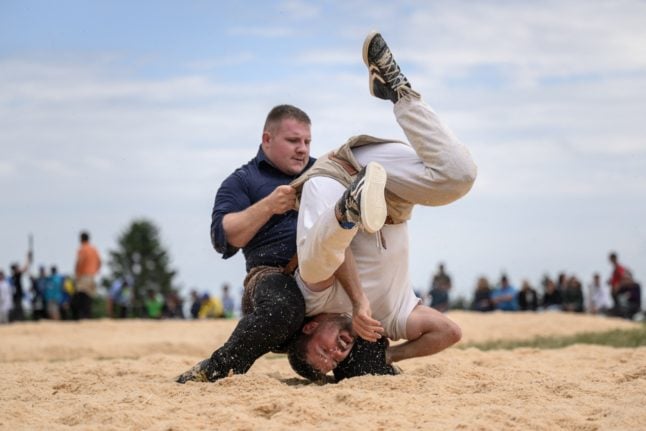Federer’s blistering form this year showed no sign of slowing down as he claimed his third straight ATP title and the fourth of his career in the California desert with a 7-6, 6-3 victory in Sunday’s final against 11th seeded John Isner.
A day earlier, the 30-year-old Swiss superstar renewed his rivalry with Spanish lefty Nadal, hammering his sixth ace on the final point of the rain-disrupted match to close out the match 6-3, 6-4.
“I guess I had a no-lose mentality,” said Federer, who said he has been battling a virus all week.
“I’ve not felt great this week. I didn’t expect myself to play so well tonight, and this is sometimes when you can pull off the biggest wins of your career.”
One of the sport’s great rivalries was on display between 16-time Grand Slam winner Federer and reigning French Open champ Nadal. It is always entertaining and full of surprises when the two tennis giants meet and this time was no different.
The start of the match was delayed for three and a half hours by rain, and there was a brief rain delay at match point.
“Obviously conditions were tough today, and against one of my greatest rivals, it’s always nice if you come out on top,” Federer said.
“I’m very happy with my game and happy that my body is holding up and mentally I’m still fresh, which is very surprising.”
Federer had a few extra minutes to think about what turned out to be his final ace after officials called the two off the court as he served for the match.
He returned a few moments later and hammered the final nail in the coffin — a 125 mph sizzler.
This was not the first time Federer has had to collect his thoughts during an unexpected delay in a match against Nadal.
“It just actually did happen against Rafa at the Australian Open,” Federer said of his four set semi-final loss to Nadal in Melbourne. “There were fireworks and I came back and couldn’t play anymore.
“It was like unbelievable. Fireworks and rain are not the same thing, but it was an interruption, even though I didn’t think of that too much.
“It was tough but at the end, once match point was over, everything was short-lived.
“It was one of those great moments that me and Rafa shared again after having already had so many great matches against each other.”
Despite the defeat, Nadal still has the career edge over Federer having won 18 times, including four of the last six. Federer has beaten Nadal 10 times.
“I tried. I fought until the last ball,” Nadal said. “I lost against a player who played better than me this afternoon.”



 Please whitelist us to continue reading.
Please whitelist us to continue reading.
Member comments